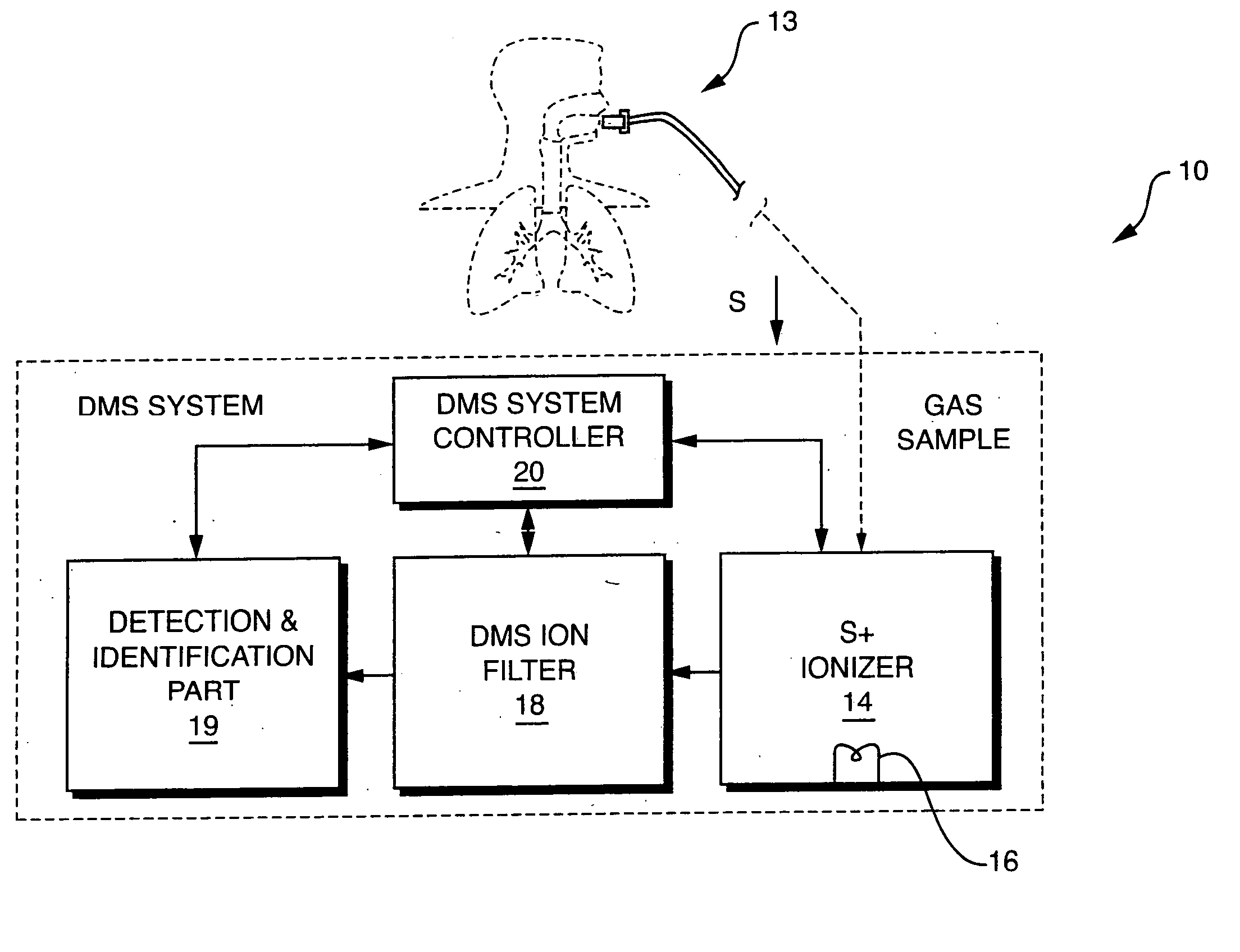NOx monitor using differential mobility spectrometry
a technology of differential mobility and monitor, applied in the field of spectrometry, can solve the problems of complex system, low cost, difficult to interpret spectra output, etc., and achieve the effects of high sensitivity and specificity, low manufacturing cost, and fast response time (msec)
- Summary
- Abstract
- Description
- Claims
- Application Information
AI Technical Summary
Benefits of technology
Problems solved by technology
Method used
Image
Examples
examples
[0056] Ion energy considerations for photo-ionization and ion formation of NOx species in air at atmospheric pressure in practice of the invention are provided below.
[0057] First, an understanding of the ion energetics and ion chemistry is provided, as this is part of the understanding of operation of the preferred DMS method and apparatus of the invention and is a foundation for interpreting the resulting spectra.
[0058] As an illustration, FIG. 13 shows the typical chemical composition of an engine exhaust. Select ion energy properties of these components are: ionization energy (EI), electron (EA) and proton affinity (PA), and potential for ion formation via a UV ionization source with photon energy of 10.67 eV.
[0059] Analysis of the data from FIG. 13 shows that only NO, NO2, and propene species have an ionization energy lower than the photon energy (10.6 eV) provided by the UV ionization lamp used in this work. Consequently only these three components of the exhaust gas will di...
PUM
 Login to View More
Login to View More Abstract
Description
Claims
Application Information
 Login to View More
Login to View More - R&D
- Intellectual Property
- Life Sciences
- Materials
- Tech Scout
- Unparalleled Data Quality
- Higher Quality Content
- 60% Fewer Hallucinations
Browse by: Latest US Patents, China's latest patents, Technical Efficacy Thesaurus, Application Domain, Technology Topic, Popular Technical Reports.
© 2025 PatSnap. All rights reserved.Legal|Privacy policy|Modern Slavery Act Transparency Statement|Sitemap|About US| Contact US: help@patsnap.com



